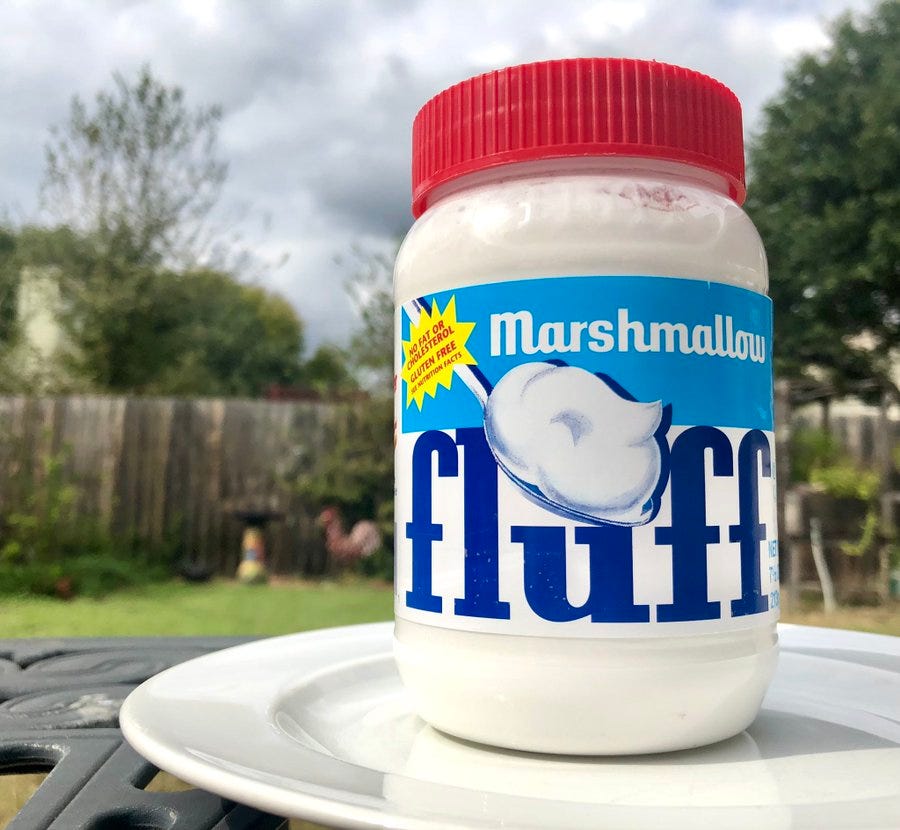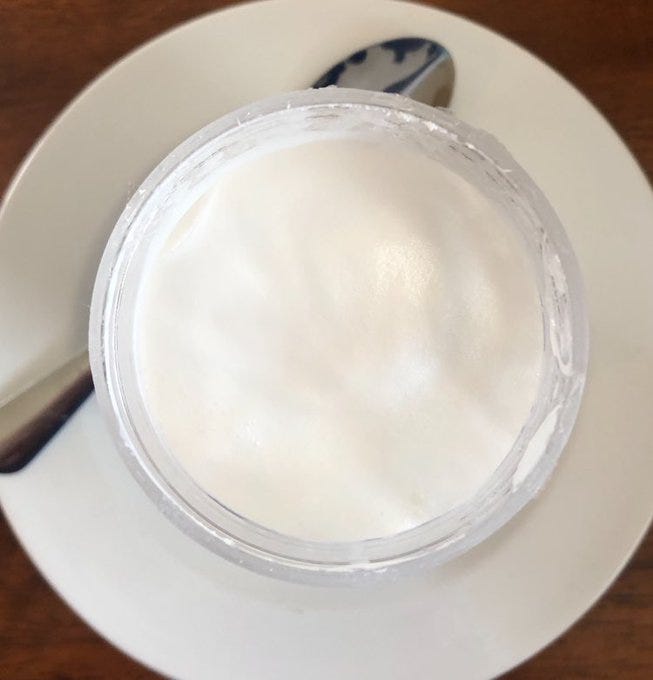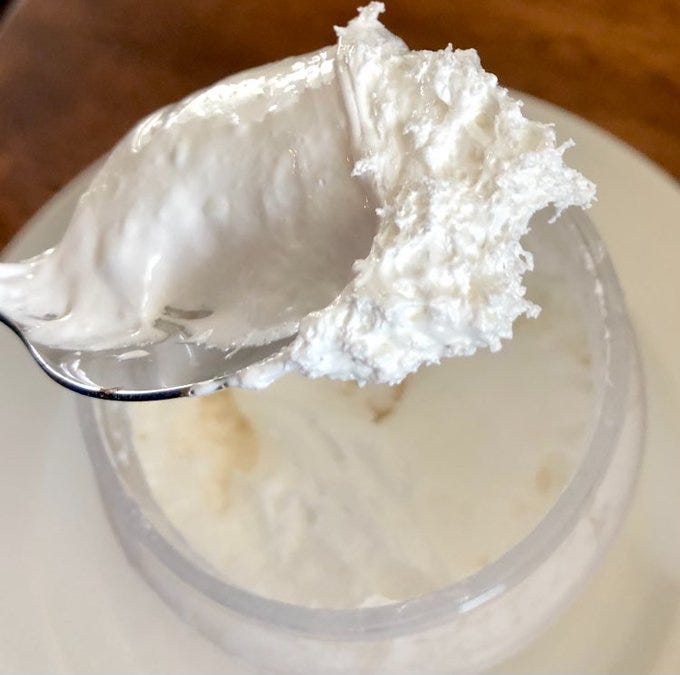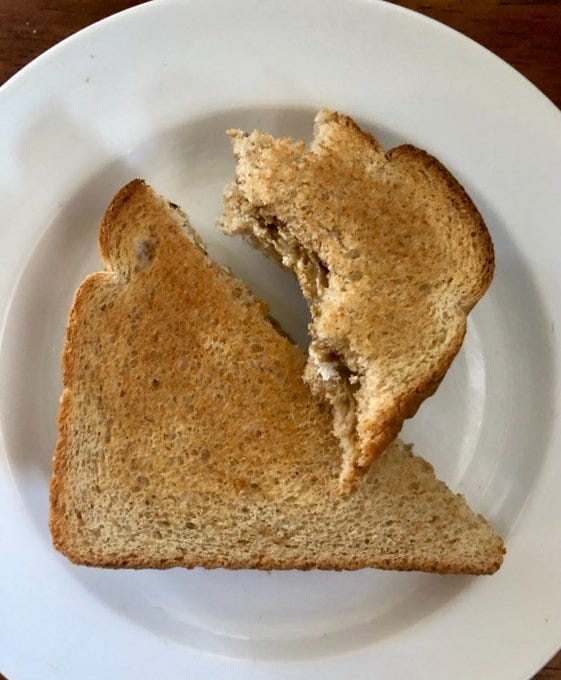Flavor Deep Dives: The pillowy oblivion of Marshmallow Fluff
Put on your Sunday best, kids! We're about to have a religious experience.
[Mom of No Rank is preparing for a conference this weekend, so please enjoy this throwback piece — plus a few addenda — from when Twitter was cool.]
Put on your Sunday best, kids! You’re about to accompany me on a religious experience. I’m a registered dietitian, and today I am reviewing Marshmallow Fluff. This is my honest, uncompensated review as a nutrition professional.
According to the company’s history, Marshmallow Fluff was invented in 1917 and the recipe sold in 1920, for $500. It spawned a radio show called “The Flufferettes” with a must-hear jingle, as well as a cookbooklet called The Yummy Book. It includes one iteration of my grandmother’s fudge, and that’s the one I still use every holiday for a gelatin-free sweet. It also contains a spectacularly weird frozen fruit salad…(mayonnaise? check) but that’s a recipe for another roulette. Let’s crack the lid so we can examine this specimen in its larval form.
First, observe this field of white — pristine, divine, untouched by anything remotely related to earthly concerns, like vegetables or natural flavors.
What? Yes, of course I’m going to eat a spoonful of it. I am a professional.
But first, let’s turn to the aroma. The vanillin (not a typo) is at the forefront, hollering like a carnival barker. (What’s vanillin? All you need to know is that it was an American Chemical Society “Molecule of the Week” in Sept. of 2016.) Lurking in the background? The unmistakable, musty scent of trusty ol’ corn syrup.
Oh yes. We have arrived at the fair. I hope you took a Dramamine.
Dip in the spoon, and you’ll see the smooth, expressionless surface has obscured thousands of bubbles. They protest this disturbance by stretching and breaking, rather than popping, leaving a craggy edge. I estimate it to be a 5 on the Van Unen Stickiness Scale.
You’ll never know how, but you’re definitely going to get some on your clothes.
It’s a texture before it’s a flavor— you’ll note a delightful springiness, an elasticity that may remind you of the first time you made brioche correctly. Then your mouth will be coated, mercilessly and impassively engulfed, like that one dude in The Blob.
Fear not, for all sugar dissolves in time, even if it was once corn. Then, in a rush…
Childhood.
Gas station pastries. School parties. Whatever holidays you observed, this flavor was there. It’s not good exactly, so much as it is love. People who loved you gave you this flavor.
It’s beyond sweet, until sweetness is all you can see or hear. It’s the alpha and omega of ultraprocessing, the pinnacle of refinement for refining’s sake. It’s hubris to think you can eat it like this and survive. It is…an ingredient. Let’s make a toasted fluffernutter!
Toast your chosen bread, sure, but a few minutes in the broiler, and you’re the first person on the pitted, alien surface of this particular moon. Just a tablespoon or two,; don’t go crazy. It puffs up beautifully.
I was going to take a pretty picture, but I forgot and ate several bites. #1 son got the other half. Share with someone you love.
Nostalgia is important to your overall diet. If that’s all it’s giving you — a few moments to close your eyes and imagine that your grandmother made you this sandwich — that’s actually it’s highest and holiest purpose. But, another rad use of this kind of treat is to see whether it can help you include something that may be difficult for you. A tablespoon has 20 calories and 5g sugar, so a 1/2 sandwich on whole grain bread with some nut butter isn’t bad, and it might encourage you to shake hands with whole grain. Does it bring joy and help with better choices later? That’s real love.
Go forth, and fluffernutter with my blessing, my child.
Update: I just found some on the frame of my glasses.








